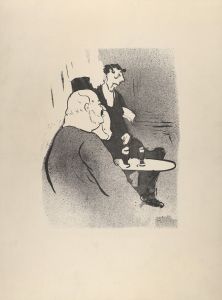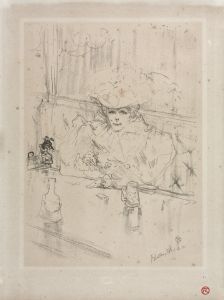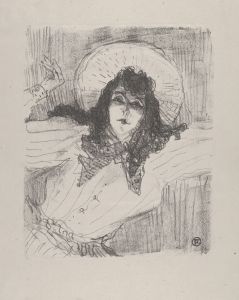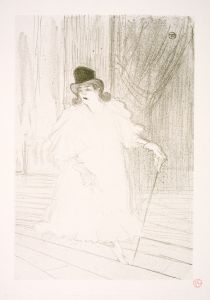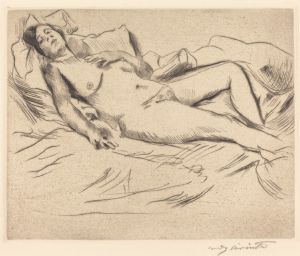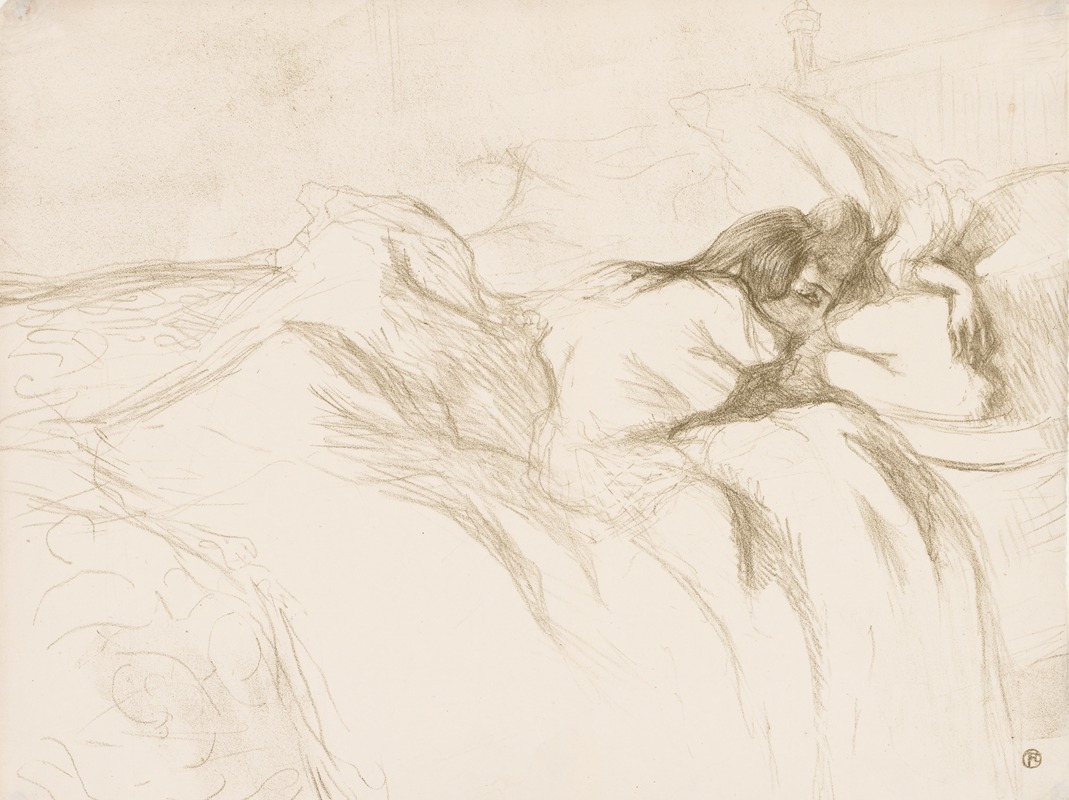
Elles: Woman Sleeping
A hand-painted replica of Henri de Toulouse-Lautrec’s masterpiece Elles: Woman Sleeping, meticulously crafted by professional artists to capture the true essence of the original. Each piece is created with museum-quality canvas and rare mineral pigments, carefully painted by experienced artists with delicate brushstrokes and rich, layered colors to perfectly recreate the texture of the original artwork. Unlike machine-printed reproductions, this hand-painted version brings the painting to life, infused with the artist’s emotions and skill in every stroke. Whether for personal collection or home decoration, it instantly elevates the artistic atmosphere of any space.
Henri de Toulouse-Lautrec, a prominent French painter and illustrator, is renowned for his vivid portrayals of Parisian nightlife in the late 19th century. Among his notable works is the series titled "Elles," which provides an intimate glimpse into the lives of women in a Parisian brothel. One of the paintings from this series is "Woman Sleeping," which captures a moment of repose and vulnerability.
"Elles" was created during a period when Toulouse-Lautrec was deeply immersed in the bohemian culture of Montmartre, a district in Paris known for its vibrant artistic community and nightlife. The series, completed in 1896, consists of a collection of lithographs that depict the daily lives of sex workers, offering a candid and empathetic view of their world. Toulouse-Lautrec's approach was groundbreaking for its time, as it eschewed the moralistic and often judgmental perspectives that were common in depictions of such subjects.
"Woman Sleeping" is a lithograph that exemplifies Toulouse-Lautrec's ability to convey emotion and character through minimalistic yet expressive lines. The artwork portrays a woman lying in bed, seemingly at rest, with her body partially covered by a sheet. The simplicity of the composition is contrasted by the depth of emotion it evokes, capturing a moment of tranquility amidst the often chaotic environment of the brothel.
Toulouse-Lautrec's technique in "Woman Sleeping" reflects his mastery of lithography, a printmaking process that involves drawing on a flat stone or metal plate with a greasy substance. This method allowed him to produce multiple copies of his work, making art more accessible to a broader audience. The use of soft lines and subtle shading in "Woman Sleeping" highlights the artist's sensitivity to the subject matter, as well as his skill in capturing the nuances of human expression.
The "Elles" series, including "Woman Sleeping," is significant not only for its artistic merit but also for its social commentary. Toulouse-Lautrec's depictions of sex workers were devoid of the sensationalism that often characterized such portrayals in the 19th century. Instead, he presented these women as individuals with their own stories and emotions, challenging the societal norms and stigmas of the time.
Henri de Toulouse-Lautrec's work, including "Woman Sleeping," has had a lasting impact on the art world. His ability to blend elements of fine art with commercial art forms, such as posters and lithographs, paved the way for future generations of artists. Moreover, his empathetic portrayal of marginalized individuals has been recognized as a precursor to modern social realism.
Today, "Woman Sleeping" and the other works in the "Elles" series are celebrated for their artistic innovation and humanistic approach. They offer a window into a bygone era, capturing the complexities of life in late 19th-century Paris with a sensitivity and understanding that continues to resonate with audiences. Toulouse-Lautrec's legacy endures, as his art remains a testament to his unique vision and profound empathy for the human condition.







